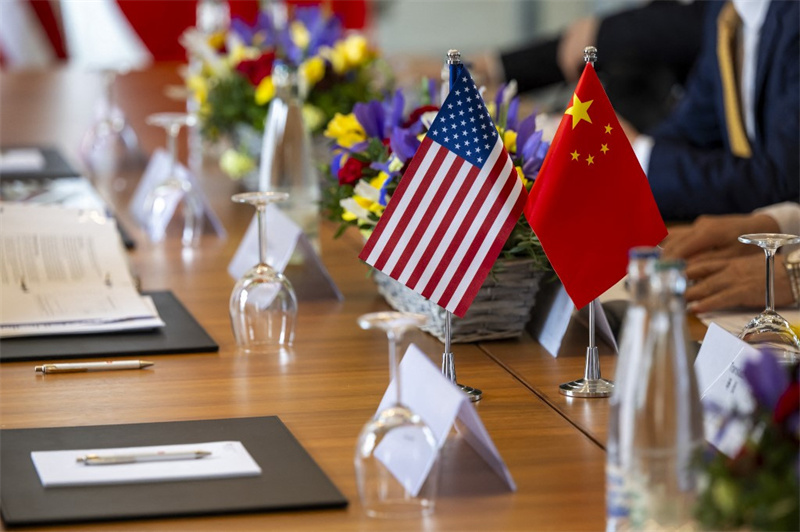The U.S. government is planning to revoke export waivers that currently allow Samsung Electronics, SK Hynix, and TSMC to operate their semiconductor fabs in mainland China using American equipment, according to a June 20 report by The Wall Street Journal citing sources familiar with the matter.
Jeffrey Kessler, Under Secretary of the Bureau of Industry and Security (BIS) at the U.S. Department of Commerce, has reportedly notified the companies of the proposed change. These waivers have enabled the firms to bypass restrictions under the sweeping October 2022 export controls targeting advanced logic, DRAM, and NAND chip production in China.
A spokesperson for the Commerce Department stated that "chipmakers will still be able to operate in China," and that the new policy would reflect a more standardized licensing framework aligned with that applied to other semiconductor firms exporting to China.
The revocation of the "indefinite waivers" would restrict these companies from freely sourcing U.S.-made advanced semiconductor tools and parts for their Chinese fabs. Without these exemptions, future technology upgrades and capacity expansions in China could be severely impacted, particularly for nodes such as 16/12nm logic, 128-layer NAND, and sub-18nm DRAM.

Samsung and SK Hynix would be the most affected, given their heavy reliance on Chinese production. Samsung's Xi'an fab—its largest overseas investment—accounts for 42% of its global NAND output, with a monthly capacity of 265,000 12-inch wafers. SK Hynix operates DRAM and NAND fabs in Wuxi and Dalian, contributing to roughly half of its global DRAM production and 20% of its NAND.
Together, Samsung and SK Hynix control nearly 70% of the global DRAM market and close to 50% of the NAND Flash market, according to TrendForce. Revoking the waivers would not only disrupt their Chinese operations but could also destabilize the global memory chip supply chain.
TSMC's exposure is more limited, as its Nanjing fab produces 16nm and 12nm chips with a capacity of around 20,000 wafers per month. However, its mature-node production (e.g., 28nm in Nanjing and other legacy nodes in Songjiang) is not subject to the current restrictions and will likely remain unaffected.
Notably, this policy change is still under discussion and has not been finalized. According to The Wall Street Journal, some U.S. government agencies—including the Department of Defense—have not endorsed the BIS proposal. There are concerns that removing the waivers could push Samsung, SK Hynix, and TSMC to turn to Chinese or non-U.S. equipment suppliers, ultimately accelerating the development of China's domestic semiconductor ecosystem.
The move also carries geopolitical implications. Roughly 60% of South Korea's chip exports go to China, and Korean fabs have far more production capacity in China than other foreign chipmakers. Any disruption in U.S.-Korea semiconductor cooperation could strain Washington's alliances in the region.
Analysts suggest that the proposal may serve as a strategic bargaining chip in ongoing trade negotiations. Although the U.S. and China reached a preliminary agreement in May 2025 to delay a 24% tariff for 90 days, final terms are still being negotiated. The U.S. may be using the threat of revoking waivers to gain leverage over both China and key allies like South Korea and Taiwan.
The White House has emphasized that the policy is not a new escalation in trade tensions but rather an effort to apply a licensing framework similar to China's own export controls on critical materials such as rare earths. It also gives the U.S. more leverage over foreign chipmakers operating in China, especially amid global efforts to diversify supply chains.
Meanwhile, SK Hynix continues to benefit from AI-driven demand. On June 16, its stock closed at a record high following news that AWS, SK Group, SK Hynix, and other affiliates plan to build South Korea's largest AI data center in Ulsan, deploying up to 60,000 GPUs with 103 megawatts of power capacity. As the world's leading HBM supplier, SK Hynix stands to gain directly from this development.
In Q1 2025, SK Hynix reported record revenues of 17.6 trillion KRW (up 41.9% YoY) and operating profit of 7.4 trillion KRW, a 157.8% increase year-over-year. According to Counterpoint Research, it overtook Samsung for the first time in global DRAM market share, reaching 36% versus Samsung's 34%, driven by surging demand for HBM.
+86 191 9627 2716
+86 181 7379 0595
8:30 a.m. to 5:30 p.m., Monday to Friday
